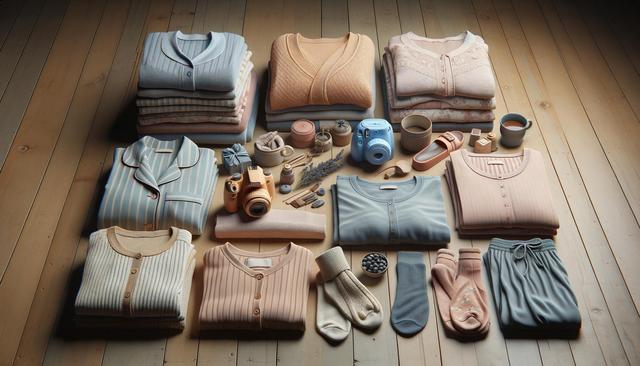Understanding the Importance of Sleep Wear
Sleep wear is more than just a nighttime outfit—it plays a crucial role in how well you sleep. The fabric, fit, and design of what you wear to bed can influence body temperature, comfort levels, and your ability to fall and stay asleep. While many people tend to overlook the importance of sleep clothing, studies have shown that the right sleep wear can contribute to better sleep hygiene and overall health. Choosing the appropriate attire for different seasons and personal preferences can help regulate your body temperature and create a relaxing bedtime routine.
Whether you prefer light cotton pajamas or cozy flannel sets, the goal is to reduce discomfort and distractions during sleep. Scratchy tags, tight fits, or non-breathable fabrics can disrupt your rest and contribute to nighttime awakenings. By selecting sleep wear that supports your body’s needs, you can create a more restful and consistent sleep experience.
Types of Sleep Wear to Consider
There are various types of sleep wear available to match different preferences and lifestyles. When choosing what to wear for sleep, it’s helpful to consider the following categories:
- Two-piece sets: These typically include a top and bottom, often in matching materials and patterns.
- Nightgowns: These are a comfortable option for those who prefer minimal restriction around the waist and legs.
- Sleep shirts: A longer shirt style that works well in warmer climates or for those who like more freedom of movement.
- Rompers or onesies: These are ideal for colder weather and provide full-body warmth.
- Sleep shorts and tanks: Great for hot summer nights or warm climates.
The selection depends not only on the weather but also on individual preferences regarding fit and feel. It’s important to try different styles to determine which one allows you to sleep most comfortably.
Choosing the Right Fabric
The fabric of your sleep wear can significantly affect how comfortable you feel throughout the night. Breathability, softness, and stretch are key qualities to look for in sleep wear materials. Some popular fabrics include:
- Cotton: Lightweight and breathable, suitable for year-round use.
- Bamboo: Known for its softness and moisture-wicking qualities.
- Silk: Luxurious and temperature-regulating, though often more delicate.
- Modal: A soft, stretchy fabric that feels smooth against the skin.
- Flannel: Warm and cozy, ideal for winter months.
Each fabric has unique characteristics, so it’s worth experimenting with different options to find what works best for your skin and sleep environment. For individuals with sensitive skin, hypoallergenic and natural materials may offer additional comfort and reduce irritation.
Sleep Wear for Different Seasons
Your sleep wear should adapt to seasonal changes to maintain comfort and support uninterrupted sleep. During summer, light and breathable materials are essential to prevent overheating. In contrast, sleep wear for colder months should provide warmth without being overly heavy or restrictive.
Here’s how to adjust your sleep wear based on the season:
- Summer: Opt for short-sleeve tops, sleep shorts, and moisture-wicking fabrics like bamboo or modal.
- Winter: Choose long-sleeve tops, full-length pants, and insulating materials like flannel or brushed cotton.
- Spring/Fall: Mid-weight fabrics and layering options work well during transitional seasons.
Layering can also be practical, especially when dealing with fluctuating indoor temperatures. A lightweight robe or sleep cardigan can provide extra warmth when needed and be easily removed.
Incorporating Sleep Wear into Your Routine
Establishing a bedtime routine that includes changing into sleep wear can signal to your body that it’s time to wind down. This habit helps create a mental and physical boundary between day and night, contributing to better sleep hygiene. Even if you’re staying at home or working remotely, changing into sleep wear at night and dressing in daytime clothes in the morning can help regulate your internal clock.
Additional tips for incorporating sleep wear into your nightly routine include:
- Store your sleep wear in a designated drawer to make it easy to access.
- Choose sleep wear that fits loosely and allows unrestricted movement.
- Wash your sleep wear regularly to maintain hygiene and freshness.
- Rotate between several sets based on the season and your mood.
Taking the time to select and care for your sleep wear can enhance your nighttime experience and contribute to more restful sleep. It’s a small but meaningful way to prioritize your well-being.












